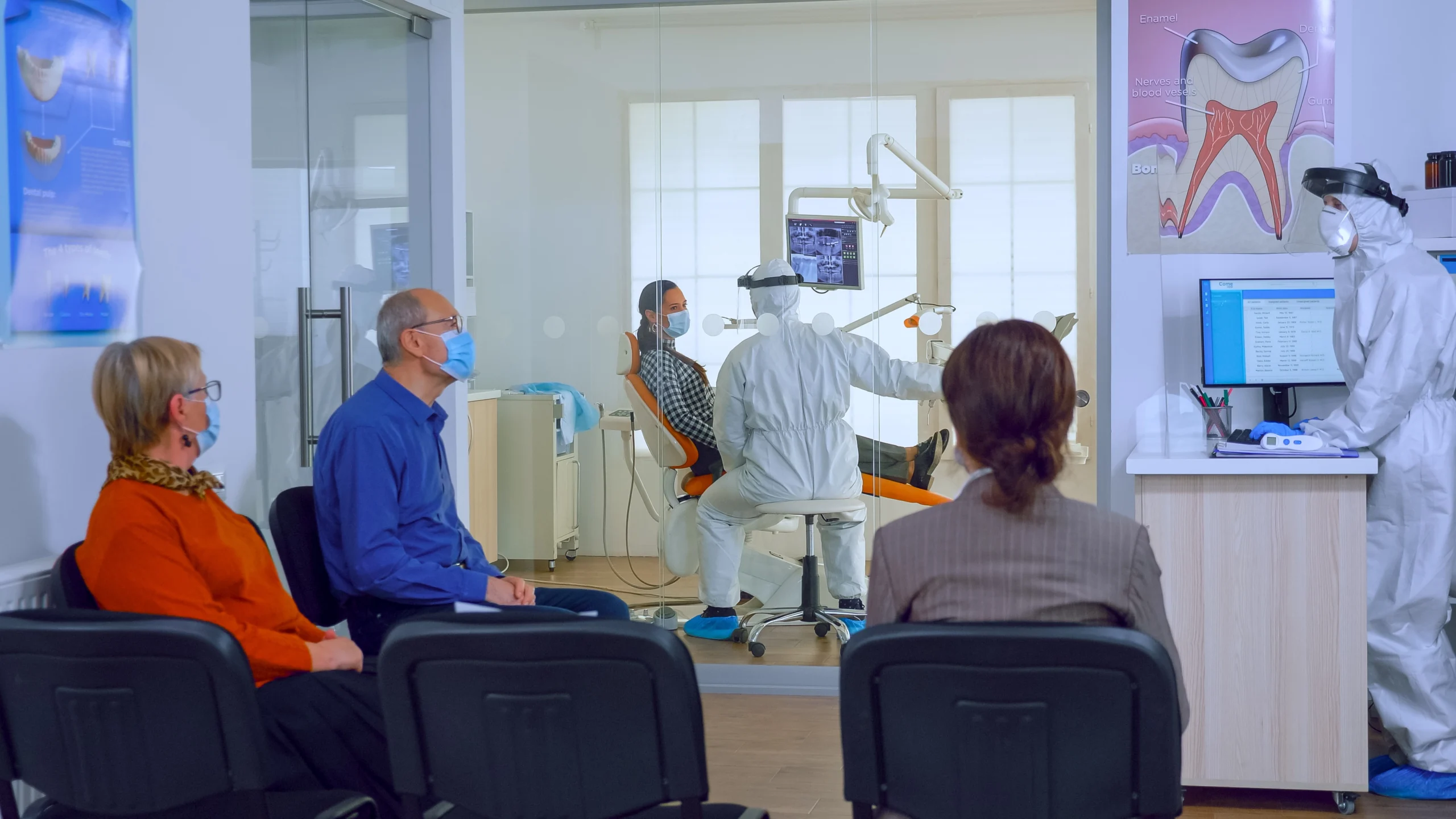Introduction:
The US Medical Research Agency is renowned for its excellence and research work all over the world. The scientific discoveries made by this institution not only guide the direction of new procedures in medical science but also provide significant contribution in the treatment of various diseases and problems.
The US Medical Research Agency, often referred to as a collective term for several prominent agencies like the National Institutes of Health (NIH), Centers for Disease Control and Prevention (CDC), and the Food and Drug Administration (FDA), plays a crucial role in advancing healthcare and biomedical research in the United States.
These agencies are responsible for funding, conducting, and coordinating research across various disciplines, ranging from basic science to clinical trials and public health initiatives. Their work not only drives innovation but also addresses critical health challenges, aiming to improve the well-being of individuals and populations worldwide.

10 great innovative initiatives from the US medical research agency
Advances in Gene Therapy
US medical research agency described the importance of gene therapy.
The initiatives being run by NIH in gene therapy.
Potential benefits and important research advances.
Studies of Antimicrobial Resistance
What is antimicrobial resistance.
The research process being done by NIH.
Analysis of potential problems and solutions.
Advances in Autism Research
Describe the issue of autism.
The leading initiatives being taken by NIH in autism research.
Describe new technologies and suitable solutions.
Studies of Diabetes and Metabolic Syndrome
Prevalence of diabetes and metabolic syndrome.
Describe the research program being run by NIH.
Describe the latest research advances and results
Precision Medicine Initiative
One of the most remarkable achievements from the US Medical Research Agency is the Precision Medicine Initiative. This program aims to tailor medical treatment to the individual characteristics of each patient. By considering factors such as genetics, environment, and lifestyle, this initiative has revolutionized the way healthcare providers approach treatment. Precision medicine is one of the 10 great innovative initiatives from the US Medical Research Agency that has the potential to significantly improve patient outcomes by delivering personalized care.
Cancer Moonshot
The Cancer Moonshot is another groundbreaking project from the US Medical Research Agency. This initiative is dedicated to accelerating cancer research with the goal of making more therapies available to more patients, while also improving the prevention and detection of cancer. The Cancer Moonshot is a key player among the 10 great innovative initiatives from the US Medical Research Agency, as it brings together researchers, doctors, and patients to collaborate on finding cures and treatments for various forms of cancer.
Brain Research through Advancing Innovative Neurotechnologies (BRAIN) Initiative
The BRAIN Initiative is one of the most ambitious projects among the 10 great innovative initiatives from the US Medical Research Agency. This initiative focuses on revolutionizing our understanding of the human brain by developing new technologies that will enable researchers to map brain circuits, understand how they work, and ultimately treat neurological and psychiatric disorders. The BRAIN Initiative is paving the way for breakthroughs in treating conditions such as Alzheimer’s disease, epilepsy, and depression.
All of Us Research Program
The All of Us Research Program is another standout among the 10 great innovative initiatives from the US Medical Research Agency. This initiative aims to gather health data from one million or more people living in the United States to accelerate research and improve health. By collecting data from a diverse population, the program seeks to uncover patterns that can lead to more effective treatments and preventative measures tailored to individuals’ unique needs.
Antimicrobial Resistance (AMR) Challenge
The rise of antimicrobial resistance is a growing concern worldwide. The US Medical Research Agency has taken a proactive stance with the Antimicrobial Resistance (AMR) Challenge, one of the 10 great innovative initiatives from the US Medical Research Agency. This initiative encourages governments, healthcare providers, and the private sector to commit to reducing antibiotic resistance through research, stewardship, and innovation in antibiotic development. The AMR Challenge is critical in ensuring that life-saving antibiotics remain effective for future generations.
Human Microbiome Project
The Human Microbiome Project is an extraordinary endeavor among the 10 great innovative initiatives from the US Medical Research Agency. This project explores the complex community of microorganisms living in and on the human body and their role in health and disease. Understanding the human microbiome opens new avenues for treating diseases, ranging from inflammatory bowel disease to obesity. The findings from this project are already influencing the development of new therapies and preventative measures.
Accelerating COVID-19 Therapeutic Interventions and Vaccines (ACTIV) Initiative
In response to the COVID-19 pandemic, the US Medical Research Agency launched the ACTIV Initiative, a crucial part of the 10 great innovative initiatives from the US Medical Research Agency. This initiative brings together public and private partners to prioritize and speed up the development of the most promising treatments and vaccines. The rapid progress made through the ACTIV Initiative has been instrumental in the global fight against COVID-19, demonstrating the agency’s ability to respond to public health emergencies effectively.
Clinical Trials Modernization Initiative
The Clinical Trials Modernization Initiative is a forward-thinking project among the 10 great innovative initiatives from the US Medical Research Agency. This initiative seeks to improve the efficiency and effectiveness of clinical trials by incorporating new technologies and methodologies. By modernizing clinical trials, the initiative aims to reduce the time and cost associated with bringing new treatments to market, ultimately benefiting patients with faster access to cutting-edge therapies.
Environmental Influences on Child Health Outcomes (ECHO) Program
The ECHO Program is a significant initiative within the 10 great innovative initiatives from the US Medical Research Agency. This program studies how environmental exposures during early development—from conception through early childhood—affect the health outcomes of children and adolescents. By understanding these influences, the ECHO Program aims to develop strategies to prevent and treat conditions like asthma, obesity, and neurodevelopmental disorders, ensuring a healthier future for the next generation.
Regenerative Medicine Innovation Project
Rounding out the list of 10 great innovative initiatives from the US Medical Research Agency is the Regenerative Medicine Innovation Project. This initiative focuses on advancing the field of regenerative medicine, which involves replacing or regenerating human cells, tissues, or organs to restore normal function. The Regenerative Medicine Innovation Project is driving forward research that could lead to groundbreaking treatments for conditions such as heart disease, diabetes, and spinal cord injuries.
visit us for more interesting facts and information : gossipmatrix.com
Frequently Asked Question :
1. What is the National Institutes of Health (NIH)?
Answer:
The National Institutes of Health (NIH) is the primary agency of the United States government responsible for biomedical and public health research. It is part of the U.S. Department of Health and Human Services and conducts its own research, as well as provides funding for research conducted outside of the NIH.
2. What is the mission of the NIH?
Answer:
The NIH’s mission is to seek fundamental knowledge about the nature and behavior of living systems and to apply that knowledge to enhance health, lengthen life, and reduce illness and disability.
3. How is the NIH funded?
Answer:
The NIH is funded primarily through appropriations made by Congress, which are then allocated to various research programs, institutes, and centers within the agency. Additional funding comes from grants and private sector partnerships.
4. How can I apply for NIH grants?
Answer:
Researchers and institutions can apply for NIH grants by submitting proposals through the NIH’s electronic Research Administration (eRA) system. The process typically involves submitting a research plan, budget, and other supporting documents for review.
5. What are NIH institutes and centers?
Answer:
The NIH is composed of 27 different institutes and centers, each focusing on specific areas of medical research, such as cancer, heart disease, mental health, and infectious diseases. Examples include the National Cancer Institute (NCI) and the National Institute of Mental Health (NIMH).
6. What types of research does the NIH support?
Answer:
The NIH supports a wide range of biomedical and public health research, including basic research, clinical studies, translational research, and population-based studies. The research spans numerous fields such as genetics, neuroscience, infectious diseases, and chronic illnesses.
7. What is clinical research, and how does the NIH support it?
Answer:
Clinical research involves studies that test new treatments, drugs, or medical devices in human subjects. The NIH supports clinical research by funding trials, providing resources like clinical research centers, and ensuring ethical standards are maintained.
8. How does the NIH contribute to public health?
Answer:
The NIH contributes to public health by funding research that leads to new treatments, preventive measures, and public health policies. It also disseminates research findings to healthcare providers, policymakers, and the public to improve health outcomes.
9. What is the NIH’s role in global health?
Answer:
The NIH plays a significant role in global health by funding research on diseases that affect populations worldwide, collaborating with international research institutions, and addressing global health challenges such as pandemics and infectious diseases.
10. How does the NIH ensure research integrity and ethical standards?
Answer:
The NIH enforces strict guidelines and regulations to ensure research integrity and ethical standards. This includes protocols for human and animal research, conflict of interest policies, and oversight by Institutional Review Boards (IRBs).
11. What are the NIH’s key initiatives and strategic priorities?
Answer:
The NIH’s key initiatives and strategic priorities include precision medicine, combating the opioid crisis, improving mental health, addressing health disparities, and advancing genomics research. These priorities guide the NIH’s funding decisions and research focus.
12. How can the public access NIH-funded research findings?
Answer:
The public can access NIH-funded research findings through the NIH’s PubMed database, which provides free access to millions of biomedical and health-related research articles. Additionally, clinical trial results are often posted on ClinicalTrials.gov.
These FAQs are designed to provide a comprehensive overview of the NIH and its role in medical research, public health, and global health initiatives.









